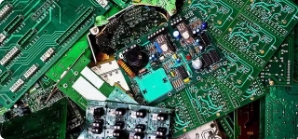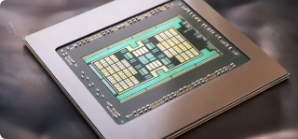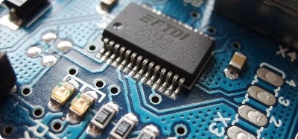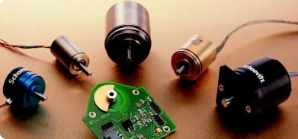Harnessing Electron Spin for Next-Generation Information Processing
In the relentless pursuit of faster, more energy-efficient information processing, a paradigm-shifting technology is emerging from the intersection of physics and engineering: spintronics. Unlike traditional electronics, which rely solely on the charge of electrons, spintronics leverages their intrinsic angular momentum-known as spin-to store and manipulate data. This dual utilization of charge and spin is unlocking new frontiers in memory, computing, and sensing, promising to address the power and performance bottlenecks plaguing modern digital systems.
The Spin-Charge Synergy: A Fundamental Shift
At the core of spintronics lies the ability to control electron spin states, a property largely ignored in conventional semiconductors. In magnetic materials, electron spins align in specific directions, creating regions of magnetization that can represent binary states (0 or 1). The breakthrough came with the discovery of giant magnetoresistance (GMR) in 1988, a phenomenon where the resistance of a material changes dramatically in the presence of a magnetic field. This won the Nobel Prize in Physics and laid the foundation for modern magnetic storage devices, such as hard disk drives, which now rely on GMR sensors to read data with nanoscale precision.
Today, the focus has shifted to manipulating spin currents directly. Spin-transfer torque (STT) technology, for example, uses a stream of polarized electrons to switch the magnetization of a nanomagnetic layer. This enables non-volatile memory devices like spin-transfer torque random-access memory (STT-RAM), which combines the speed of SRAM with the density of DRAM and the non-volatility of flash memory. Recent prototypes have demonstrated write speeds under 5 nanoseconds and endurance exceeding 10^15 cycles, far surpassing traditional memory technologies.
Material Innovations Driving Progress
The success of spintronics hinges on developing materials that efficiently generate, transport, and detect spin-polarized currents. Half-metallic ferromagnets, such as Heusler alloys (e.g., Co2MnSi), exhibit 100% spin polarization at their Fermi level, making them ideal for injecting pure spin currents into semiconductors. Researchers have also made strides with two-dimensional materials like graphene and topological insulators, which allow spin-polarized electrons to travel long distances with minimal scattering-critical for maintaining spin coherence in devices.
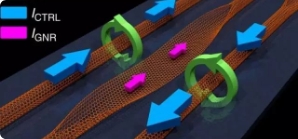
A landmark achievement came with the realization of electric-field control of magnetism in multiferroic materials. By applying an electric field to bismuth ferrite (BiFeO3), scientists were able to reversibly switch the magnetic orientation of thin films at room temperature, eliminating the need for energy-intensive magnetic fields. This paves the way for ultra-low-power spintronic devices where both charge and spin states are modulated electrically, reducing operational voltages to below 0.5V.
Technological Breakthroughs: From Memory to Computing
Spin Logic: Redefining Computational Architectures
Traditional logic gates rely on charge-based transistors, which dissipate significant energy as heat during state transitions. Spintronic logic devices, by contrast, use spin polarization to perform Boolean operations with orders-of-magnitude lower power consumption. Magnetic logic gates based on spin-orbit torque (SOT) technology have demonstrated switching energies as low as 10 fJ per operation, compared to 100 fJ in advanced CMOS transistors. These devices can also be integrated with STT-RAM to create "compute-in-memory" architectures, reducing data movement delays that currently limit processor performance.
Spin Sensors: Ultra-Sensitive Magnetic Detection
In the sensing domain, spintronic devices are revolutionizing magnetic field measurement. Tunnel magnetoresistance (TMR) sensors, built from layered ferromagnetic and insulating materials (e.g., iron/magnesium oxide/iron junctions), achieve sensitivity levels down to 100 pT-sufficient to detect the magnetic fields generated by neural activity in the brain. In automotive applications, these sensors enable precise wheel-speed detection and compass navigation, with error margins less than 0.1 degrees.
Real-World Applications and Market Impact
The first wave of spintronic products has already hit the market, led by non-volatile memory. STT-RAM is being adopted in embedded systems for industrial automation, where its ability to retain data during power outages and withstand extreme temperatures (up to 125°C) addresses critical reliability needs. In consumer electronics, spintronic sensors are enhancing smartphone cameras by enabling ultra-stable image stabilization through precise motion tracking.
Looking ahead, the integration of spintronics with emerging technologies like neuromorphic computing holds transformative potential. Spin-based artificial synapses, which mimic the plasticity of biological neurons by adjusting their magnetic resistance in response to spin-polarized current pulses, have demonstrated learning efficiencies 50% higher than traditional resistive synapses. This could enable brain-inspired computing systems that excel at pattern recognition and real-time data processing while consuming 90% less energy than conventional AI chips.
Challenges and the Path Forward
Despite its promise, spintronics faces hurdles in scaling and compatibility with existing semiconductor processes. Maintaining spin coherence in silicon-the workhorse of modern electronics-remains challenging due to silicon's weak spin-orbit coupling. Researchers are addressing this through hybrid architectures, combining silicon transistors with magnetic tunnel junctions in 3D-stacked configurations. Additionally, standardizing fabrication processes for exotic materials like Heusler alloys and topological insulators will be critical for mass production.
Yet the momentum is undeniable. Industry analysts project the spintronics market to reach $25 billion by 2030, driven by applications in automotive electronics, renewable energy systems, and edge computing. As research progresses from lab prototypes to commercial deployment, spintronics is set to redefine the very foundation of information technology-not by replacing traditional electronics, but by complementing them to create a more efficient, versatile, and intelligent technological ecosystem.

